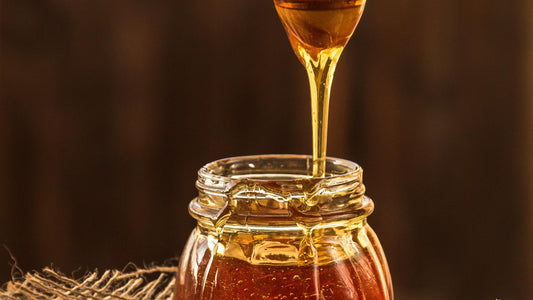
So ernten Sie Regenwasser für den besten grünen Sommer aller Zeiten
Aktie
Wenn der Sommer naht und die Temperaturen steigen, ist es wichtig, einen kühlen Kopf zu bewahren und gleichzeitig auf den Wasserverbrauch zu achten.
Nutzen Sie diesen Sommer die umweltfreundliche Regenwassersammlung, machen Sie das Beste aus der Jahreszeit und sparen Sie gleichzeitig Wasser.
Was ist Regenwassersammlung?
Was fällt Ihnen ein, wenn Sie den Begriff „Regenwassernutzung“ hören? Sie stellen sich vielleicht seine Anwendung in der Landwirtschaft oder bei der Unterstützung von Gemeinden in Entwicklungsländern vor. Die Regenwassernutzung hat an Popularität gewonnen und wird heute von Einzelpersonen, Unternehmen und Gemeinden weltweit weithin angenommen. Sie verändert unsere Denkweise über Wasserschutz und -management, von Wohnimmobilien bis hin zu Gewerbegebäuden.
Bei der Regenwassernutzung wird Regenwasser gesammelt und gespeichert, das auf nicht saugfähige Oberflächen wie Dächer und Gehwege fällt. Das gesammelte Regenwasser kann als nachhaltige und kostengünstige Wasserquelle für verschiedene Zwecke genutzt werden.
Möglicherweise haben Sie schon verschiedene Namen dafür gehört, wie zum Beispiel Regenwasser- oder Dachwassersammlung . Das zugrundeliegende Konzept bleibt jedoch dasselbe – Auffangen und Verwenden von Regenwasser für verschiedene Zwecke.
Vorteile der Regenwassernutzung
Hier sind die wichtigsten Gründe, warum Sie über die Nutzung von Regenwasser nachdenken sollten:
Vorteil 1: Kosteneinsparungen bei der Wasserrechnung
Im Sommer verbrauchen wir mehr Wasser für Aktivitäten wie das Gießen von Pflanzen, das Befüllen von Pools und zusätzliche Duschen, um uns abzukühlen. Dieser Anstieg des Wasserverbrauchs kann unsere Wasserrechnungen erheblich in die Höhe treiben. Glücklicherweise ist die Regenwassernutzung eine Lösung, die helfen kann, diese Kosten zu senken. Studien zeigen, dass Hausbesitzer, die Regenwassernutzung mit geeigneten Speicher- und Filtersystemen umsetzen, Sparen Sie zwischen 40% und 50% bei ihrer Wasserrechnung und sparen gleichzeitig eine Menge Geld.
Wussten Sie, dass das Sammeln von Regenwasser dazu beitragen kann, den unnötigen Verbrauch von aufbereitetem Wasser zu reduzieren? Es ist überraschend zu erfahren, dass allein das Spülen von Toiletten etwa 30 % des Wasserverbrauchs in einem durchschnittlichen Haushalt ausmacht, was zu einer erheblichen Verschwendung von aufbereitetem Wasser führt. Die Verwendung von Regenwasser für Aufgaben wie das Spülen von Toiletten kann aufbereitetes Wasser sparen und ein umweltfreundliches Wassermanagementsystem fördern.
Vorteil 2: Gut für Ihre Pflanzen

Es kann schwierig sein, Ihre Pflanzen im heißen Sommer gesund zu halten, aber glücklicherweise kann uns der Regen dabei helfen. Regenwasser ist von Natur aus weich und frei von Salzen, Mineralien, Chemikalien und Arzneimitteln, die im Leitungswasser enthalten sind.
Darüber hinaus ist der pH-Wert des Regenwassers leicht sauer, im gewünschten Bereich (pH 5,5 bis 6,5) für die meisten Pflanzen. Im Gegensatz dazu ist Leitungswasser normalerweise alkalisch und hat einen pH-Wert über 8,5. Der natürliche Säuregehalt des Regenwassers schafft die perfekte Umgebung für Pflanzenwachstum und Nährstoffaufnahme, was zu gesunden und kräftigen Blättern führt. Wenn Sie Ihre Pflanzen im Sommer mit Regenwasser düngen, schaffen Sie daher ideale Bedingungen für ihr Gedeihen.
Vorteil 3: Gut für die Umwelt und Ihre Nachbarschaft
Im Frühling und Sommer regnet es tendenziell mehr, was zu einem erhöhten Abfluss von Regenwasser führt. Dann fließen Niederschläge wie Regen oder schmelzender Schnee über den Boden und erreichen schließlich Flüsse, Meere oder den Boden.

In der Natur wird Regen von Bäumen, Pflanzen und dem Boden absorbiert, was zu stabilen Flussläufen und einer hohen Wasserqualität beiträgt. In unseren modernen städtischen Gebieten mit dicht gedrängten Gebäuden und schlechtem Regenwassermanagement treten jedoch Probleme auf. Große Mengen Regenwasser fließen schnell in Flüsse, wodurch der Wasserstand schnell ansteigt und Überschwemmungen verursacht werden. Darüber hinaus führt Regenwasser Schadstoffe wie Öl, Düngemittel, Pestizide, Sedimente, Müll und tierische Abfälle mit sich, wenn es über Dächer, Einfahrten, Straßen und Rasenflächen fließt. Diese Schadstoffe gelangen unbehandelt in die örtlichen Bäche und Gewässer , verunreinigen unser Wasser und schädigen die aquatischen Ökosysteme.
Durch die Einführung von Regenwassersammelsystemen können wir die schädlichen Auswirkungen des Regenwasserabflusses reduzieren. Dies verringert nicht nur den Druck auf die kommunale Wasserversorgung, sondern trägt auch zu einer gesünderen Umwelt bei und sichert die Wasserqualität in unseren Gemeinden.
Wie sammelt man Regenwasser?

1. Bewerten Sie Ihren Wasserbedarf
Entscheiden Sie, wie Sie das gesammelte Regenwasser nutzen möchten. Sie können es zum Bewässern Ihres Gartens, zum Autowaschen oder für andere Outdoor-Aktivitäten verwenden, bei denen Wasser benötigt wird.
2. Ungefähres Regenwassersammelpotenzial
Um die Menge an Regen zu bestimmen, die Sie sammeln können, untersuchen Sie die durchschnittlichen Niederschlagsmuster in Ihrer Gegend. Berücksichtigen Sie die Größe Ihrer Sammelflächen, z. B. Ihres Daches.
3. Fangen Sie klein an mit Regentonnen oder Zisternen
Wenn Sie sich stärker engagieren möchten oder mit einem kleineren System beginnen möchten, können Sie Regentonnen, Zisternen oder unterirdische Tanks in Ihrem Garten oder auf Ihrem Balkon verwenden. Mit diesen Behältern können Sie Regenwasser sammeln und speichern, um es sofort zum Gießen von Pflanzen oder für andere Outdoor-Aktivitäten zu verwenden. Installieren Sie Filter und Siebe, um zu verhindern, dass Schmutz oder Verunreinigungen in die Vorratsbehälter gelangen, und stellen Sie sicher, dass das Wasser sauber bleibt.
4. Erkunden Sie professionelle Dienstleistungen:
Wenn Sie unkompliziert in ein Regenwassersammelsystem investieren möchten, wenden Sie sich an Experten vor Ort. Diese können Ihnen helfen, ein maßgeschneidertes System zu installieren, das Ihren individuellen Anforderungen entspricht, auch wenn Sie in Wohnungen leben. Sie können das gesammelte Wasser in Ihr Bewässerungssystem umleiten, um die Effizienz zu maximieren.
5. Engagement der Community fördern:
Wenn Sie in einem Mehrfamilienhaus oder einer Wohnanlage wohnen, ist es eine gute Idee, mit Ihren Nachbarn zusammenzuarbeiten und Regentonnen in Gemeinschaftsbereichen zu teilen. Dies fördert nachhaltige Praktiken und ermutigt die Gemeinschaft, sich für ein gemeinsames Ziel zu engagieren.

Ideen zur Verwendung von Regenwasser im Sommer
Damit Sie das Beste aus Ihrem gesammelten Regenwasser herausholen, finden Sie hier einige Vorschläge.
1. Bewässerung Ihrer Pflanzen, Blumen und Gartenbeete: Nutzen Sie den Regen, um Ihren Garten zu nähren.
2. Reinigung im Außenbereich : Regenwasser eignet sich ideal zum Reinigen von Gartenmöbeln, Terrassenflächen und Gartengeräten. Entscheiden Sie sich für umweltfreundliche Reinigungsprodukte, die mit Regenwasser kompatibel sind, um eine umweltfreundliche Reinigungsroutine zu gewährleisten.
3. Fensterreinigung: Regenwasser ist eine großartige Möglichkeit, Ihre Fenster zu reinigen, ohne Streifen oder Mineralablagerungen zu hinterlassen. Mischen Sie es einfach mit einer Reinigungslösung, um strahlende Ergebnisse zu erzielen.
4. Waschen von Fahrzeugen und Außengeräten: Verwenden Sie zum Waschen Ihres Autos, Fahrrads oder anderer Outdoor-Geräte kein aufbereitetes Wasser, sondern Regenwasser.
5. Schwimmbadbefüllung: Wenn Sie einen Swimmingpool haben, sollten Sie ihn mit Regenwasser auffüllen. Zwar ist ein Filtersystem für eine vollständige Wiederauffüllung besser, aber die Verwendung von Regenwasser kann dennoch dazu beitragen, die Menge an aufbereitetem Wasser zu reduzieren, die zur Aufrechterhaltung des Wasserstands Ihres Pools benötigt wird.
6. Toilettenspülung: Die Verwendung von Regenwasser zum Spülen von Toiletten ist eine praktische Möglichkeit, Wasser zu sparen. Dadurch wird der Einsatz von aufbereitetem Wasser reduziert und es ist besonders hilfreich, da das Spülen einen erheblichen Teil des Wasserverbrauchs im Haushalt ausmacht.
7. Kompostierung: Befeuchten Sie Ihren Komposthaufen mit Regen, um die Zersetzung zu beschleunigen. Regen hat natürliche Eigenschaften, die ihn zur perfekten Wahl machen, um den richtigen Feuchtigkeitsgehalt in Ihrem Kompostbehälter aufrechtzuerhalten.
8. Brandschutz: Obwohl wir hoffen, dass Sie es nie verwenden müssen, kann eine leicht verfügbare Wasserquelle, wie beispielsweise Regenwasser, im Brandfall zusätzliche Sicherheit bieten.
9. Trinken und Baden (mit der richtigen Behandlung): Mit der richtigen Filterung und Aufbereitung kann Regenwasser zum Trinken und Baden verwendet werden. Investieren Sie in ein hochwertiges Filtersystem, das Verunreinigungen entfernt und die Sicherheit des Wassers gewährleistet, bevor Sie es für diese Zwecke verwenden.
Zusammenfassend
Bei der Verwendung von Regenwasser für beliebige Zwecke ist es wichtig, Sicherheit und Hygiene an erste Stelle zu setzen. Um die Ansammlung von Schmutz oder Verunreinigungen zu verhindern, reinigen Sie Ihre Regenwasserspeicherbehälter, Filter und Siebe regelmäßig. Wenn Sie diese Vorsichtsmaßnahmen beachten, können Sie Regenwasser sicher für Ihre gewünschten Zwecke verwenden und seine Vorteile genießen.
Da der Sommer vor der Tür steht, sollten wir uns überlegen, ob wir mit der Regenwassersammlung etwas Positives bewirken können. Jeder Tropfen zählt. Egal, ob Sie mit einer kleinen Regentonne für Ihren Garten beginnen oder sich für ein umfangreicheres Sammelsystem entscheiden, der erste Schritt ist entscheidend. Auf diese Weise können wir Tropfen für Tropfen auf eine nachhaltigere und wassereffizientere Welt hinarbeiten.
Weitere nachhaltige/umweltbewusste Tipps finden Sie auf unseren Social-Media-Seiten . Viel Spaß!

Hallo, ich bin Aleesya Karim. Ich bin eine Blumen- und Katzenfanatikerin aus einem tropischen Land, Malaysia. Wenn ich ein Baum wäre, wäre ich eine Kokospalme. Ihre unglaubliche Nützlichkeit, selbst wenn sie schon lange nicht mehr da sind, ist wirklich cool. Ich hoffe also, dass meine Artikel meine Frucht- oder Blattspende für Ihre grüne Reise sein können 😉




